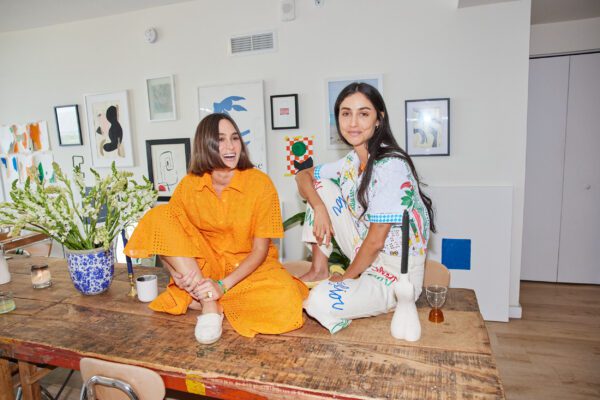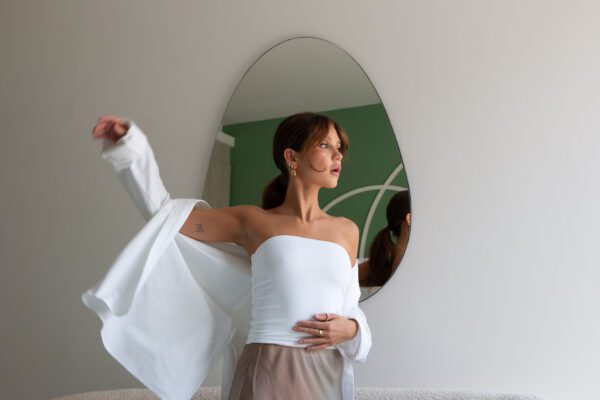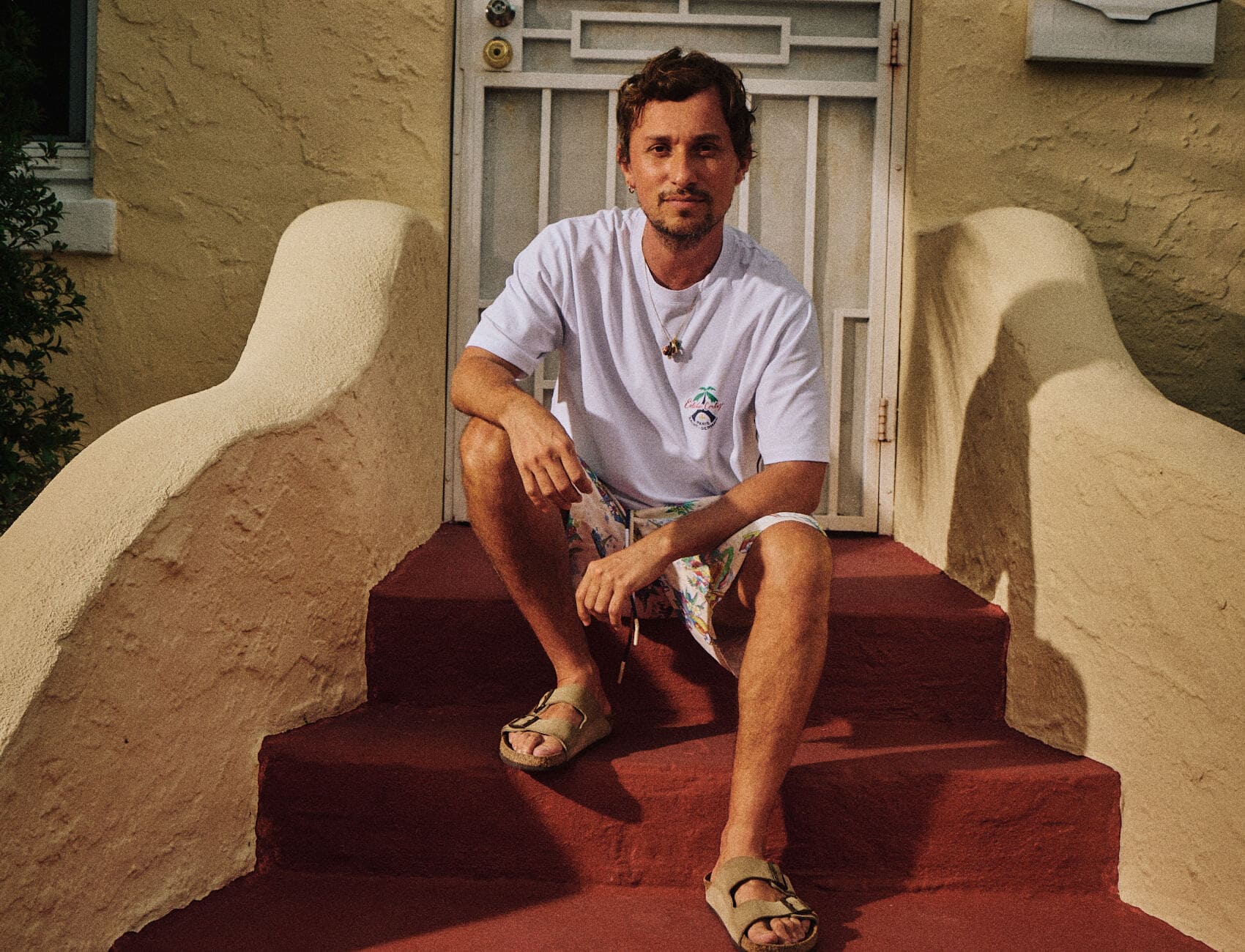
COFFEE WITH
ESTEBAN CORTAZAR: “FROM AN EARLY AGE I WANTED TO BE ON SOME KIND OF STAGE, AND FASHION GAVE ME THAT”
Name: Esteban Cortázar
Profession: Designer
Nationality: Colombian
Zodiac sign: Taurus
Instagram: @ecortazar
LATINNESS: You grew up surrounded by photographers and models in Miami in the nineties. Do you recall a specific moment that inspired you to explore fashion?
ESTEBAN: Well, there were many moments that made me want to explore fashion, surrounded by all of that and seeing all these shoots on the beach with such amazing photographers, supermodels, Versace, living above News Cafe, all of that. But, I do think that the moment was when I met Todd Oldham, who was such an amazing designer in the nineties and a big mentor for me.
I met him when he opened a little store on 8th, between Ocean and Collins. That was the time when all the girls were in the shows and he was the talk of the town in New York. They’d always play the fashion shows on TV in the store, and I’d stay there for hours watching, until I met Todd and we became friends. I was this little boy who welcomed him into the neighborhood, and he thought it was really cute.
I’d do my homework in the back of the store, and since he knew how obsessed I was with watching the shows, he invited me to his Spring 1998 show in New York. My dad let me go with the manager of the store who would babysit me from time to time.
We stayed at the Soho Grand hotel, I got into this whole little outfit and went to the fittings. I was 13, Cindy Crawford was at the fitting, and I was just watching all of this.
When I saw that show and everything that happened backstage, I came back to Miami wanting to imitate that. Then they announced a talent show at South Pointe Elementary, and I decided to do a fashion show to imitate what I’d seen in New York. That’s really the way it happened.
That moment really solidified my obsession with fashion. Then– although it was more tragic– when Gianni Versace was murdered just three blocks from my house, that was also a huge moment. He became this superhero for me. I was so young and exposed to that drama, which I didn’t understand. I’d see him every morning when he’d come to the News Café for breakfast. The News had the only store in South Beach with magazines from around the world, and they had the Gianni Versace table books.
I’d sit there for hours looking at them, and so when that tragedy happened, it really affected me, I was really sad. It gave me so much inspiration to really explore fashion because he became a huge icon for me after that. I think Gianni and Todd both were my introduction to fashion.
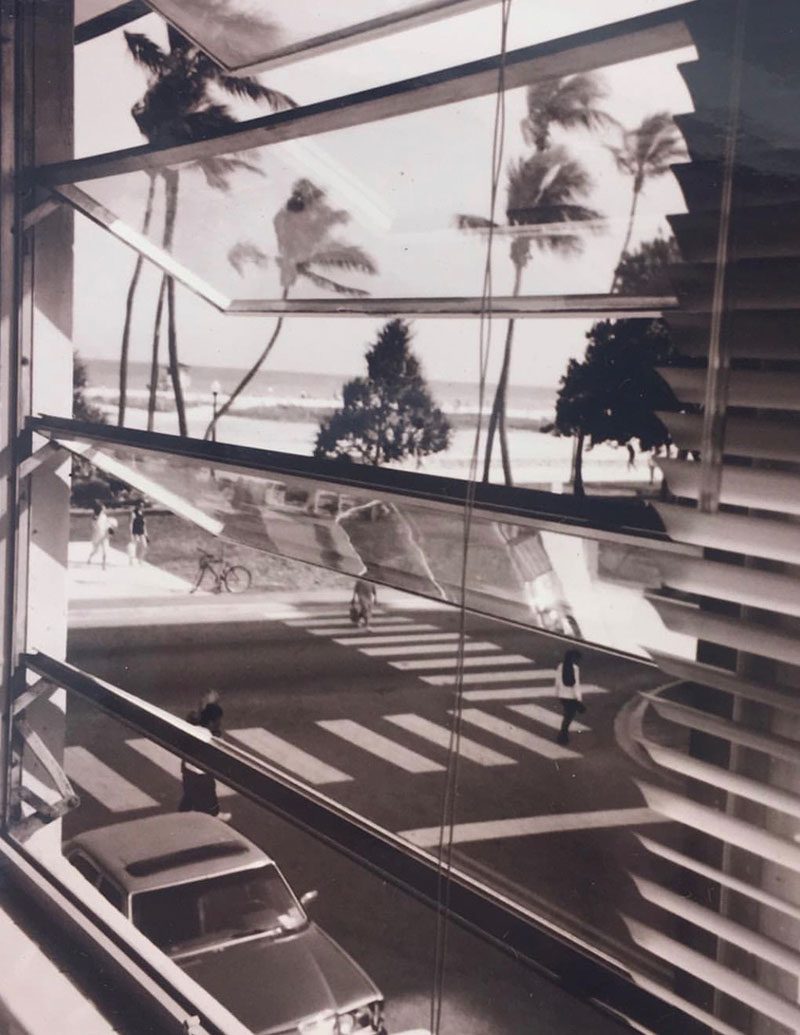
Growing up in Miami, Florida in the nineties.
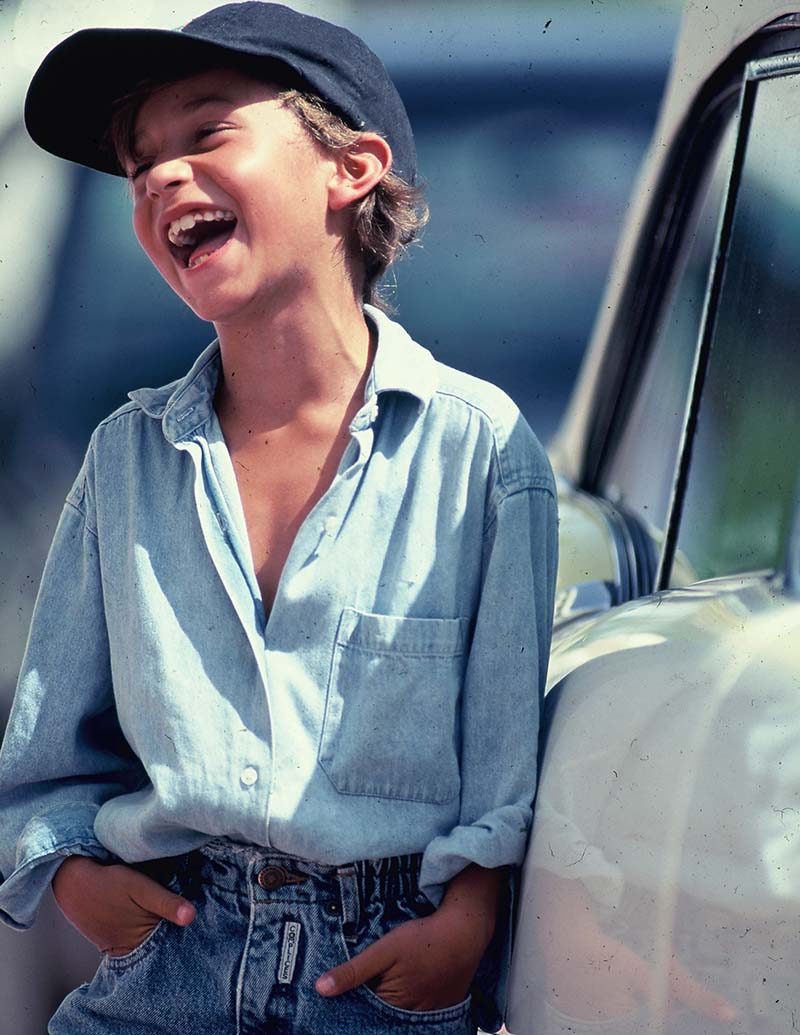
LATINNESS: Your first runway show was at the age of 18, and at the time, they called you a ‘wonder boy’. What kind of pressure did that put on you as a designer?
ESTEBAN: I think the pressure came later. At the time, I didn’t feel any pressure because I was really just playing around, and it ended up becoming this thing because of the attention I started to get. I was not mega skilled at the time– I was still in high school, but I always liked attention. Since I was little, I was always dancing and performing in front of my mom and dad’s friends. From an early age, I wanted to be on some kind of stage and fashion gave me that.
Later, as things got more serious and there were investors and buyers involved, order cancellations, bad reviews, good reviews, all of that, it became a lot of pressure for someone very young.
I went to Emanuel Ungaro very early on– I was 22 when that happened– so my career started in a very big way, very early on. Then when you do have ups and downs– because I have had them– the pressure becomes more real and you start to question yourself more.
It’s human nature, things that we all go through, but when you’re in the spotlight as a kid, it’s hard. I think it’s because you grow up and become who you are, and you have all of this pressure of what you’ve done at such a young age. It’s something that I dance with now in a much more open way, but there have been times when I felt more pressure than others.
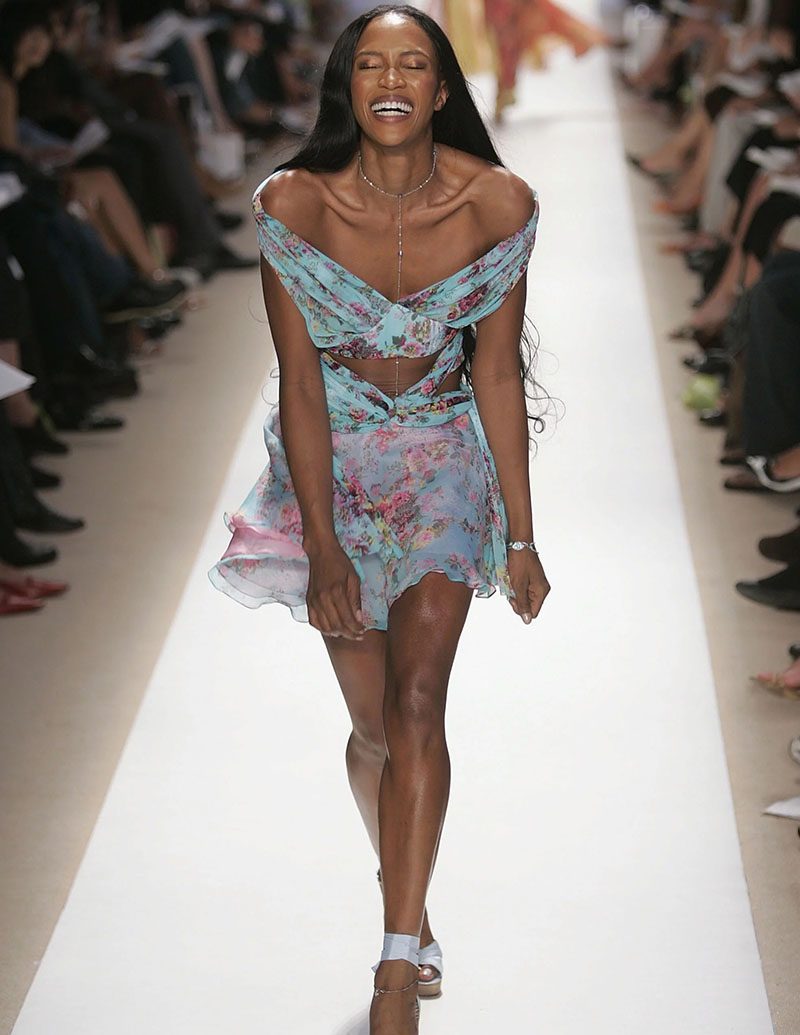
Naomi Campbell walks Cortazar’s Spring 2005 show.
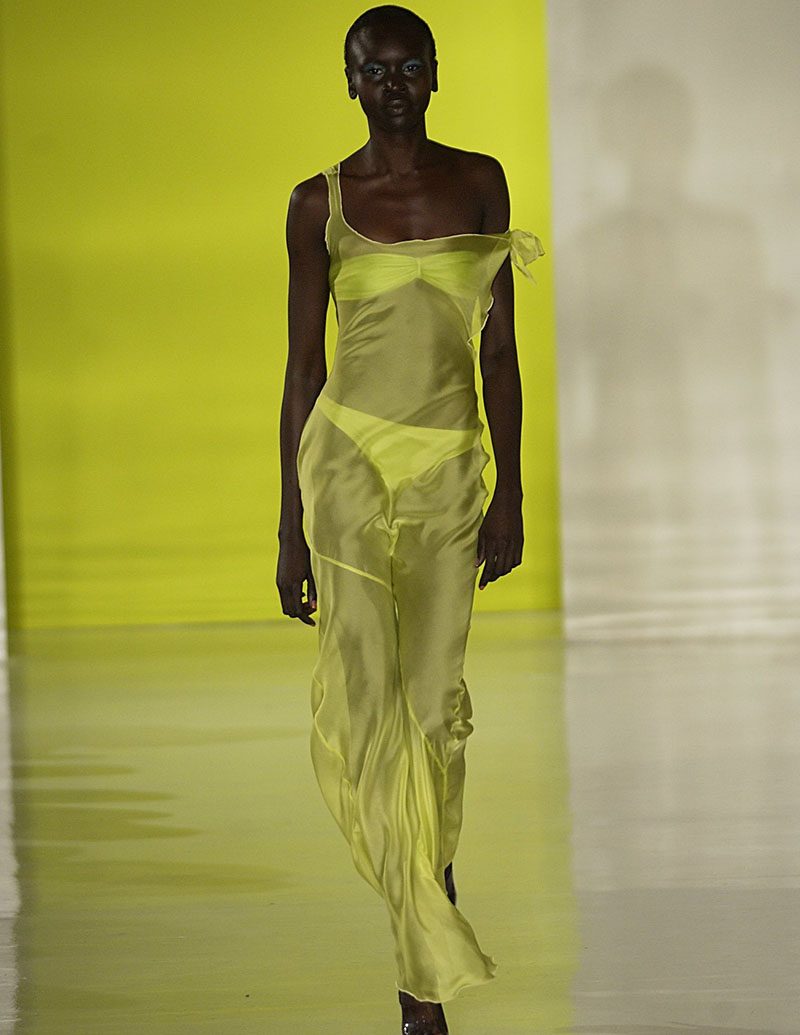
Alex Wek walking Cortazar’s first runway show.
LATINNESS: It’s easier to create from a place of innocence…
ESTEBAN: My skin also got thicker. Once I was showing in Paris, I was zero affected by a bad review, I didn’t take it as seriously any more. At the beginning it was harder because you’re not used to that kind of thing.
That’s why it’s so important when you start maturing, because when you’re young, you don’t realize a lot of things. Once I started to have a connection with my community, with my customers and with the people that love, it kind of liberated me from worrying about the pressure from the outside world. It’s always going to be there— I’m not going to please everybody and not everyone’s going to like what I do. Once you know that as an artist, then everything becomes easier. Then it’s just secondary. People’s opinion, people’s ways, people’s pressure or perception of me isn’t on me, it’s on them. It’s hard, but when you start to realize that, then you know it’s easier to just create, have fun, be you, and that’s it.
LATINNESS: You just mentioned the community around you, which makes me recall something very particular about your shows in Paris. Oftentimes, the vibe at these shows is very cold and intimidating, but in your shows, from the minute you walked in, there was this palpable energy and feeling of warmth and support. My first question is: did you feel this? And second, what do you attribute it to?
ESTEBAN: I think it’s an energy you put out. I do like to have a unifying positive, warm energy, in general. You know me well, Kelly, and that’s just who I am in every scenario. Well, that was always the thing for me with the shows, because I get as equally intimidated as anyone else in that kind of thing. You know the pressure of who’s coming, if such and such a person is able to come or not, of something I felt needed to be the case in order for the show to “have success”or be “worthy”.
That’s all outside noise, and so for me, it was just a moment to have a good time, and if I were still showing right now, I’d do it even more so. That’s what’s great about what’s going on in fashion right now— it’s changed so much in a way that people have found communities they want to belong to, where they feel welcome no matter what kind of thing it is. Especially the younger designers today, it’s really about doing the show for their community, which I think is really good.
Before, the show was for a lot of people that weren’t necessarily part of your community, but you needed to have them there because it was “important” to do so. Sometimes these people would come and never write about your show or never buy anything, but they would still come to see what you were doing and there’s a certain level of intimidation to that.
When you do the show for your friends, for your family, for your community, for the customers that love you, for the editors, all the fashion community, but the ones that are really there for you personally, not just professionally, who are there because they love you and they love what you do, then there’s good energy at the show. There’s not that ambiance where people don’t say hi to each other and everything is so cold. That’s the sort of fashion that’s the hardest for me. I try not to engage with that as much as possible, but it’s also the game, so it is what it is.

Backstage at Spring-Summer 2019 fashion show.
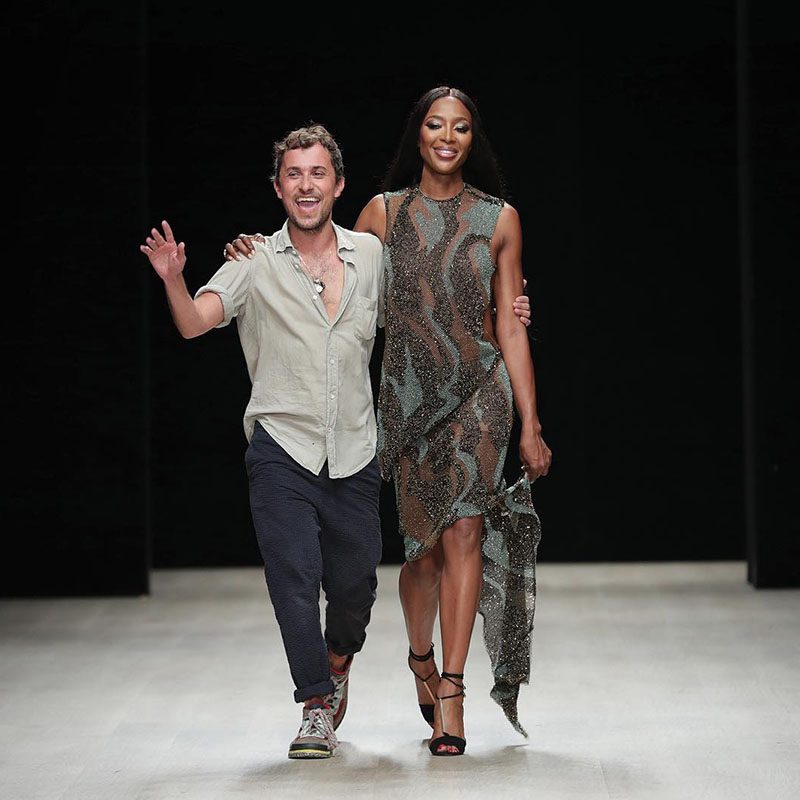
Cortázar with Naomi Campbell at Nigeria’s Arise Fashion Week, in 2019.
LATINNESS: Actually, on that note, it seems like you’re not afraid to create your own rules. Post pandemic it’s a thing, but you’ve been ahead of the game– you did the unthinkable and left Ungaro on your terms. When you relaunched in 2012, you did it with Net-A-Porter, which wasn’t something designers were doing at the time. What has guided these decisions?
ESTEBAN: I think it’s my freedom. I was taught from an early age by my father and my mother, but my father especially, because he’s an artist and has been all his life— that’s all he’s ever done. His freedom has been the number one priority in his life, obviously along with me, my mom, everybody, but his freedom is so important for him to feel like he doesn’t owe anything to anybody, to feel like he doesn’t have to answer this or that. He’s a very free, bohemian artist in that way; he’s 74 years old and that’s how he’s been all his life.
My mom is very similar, so that’s probably the reason why I’ve made decisions that way, because they’re just about what makes sense for me at that moment, and not being afraid of just doing it. There’s fear sometimes, for sure, and there’s self-doubt or opinions that come in and start to derail you. I’m also a very collaborative person, so I love to have people that I trust give their opinion, and I love to talk back and forth to build an idea. I’m very open in that way, but as I mature, my freedom is increasingly important.
As well as integrating the different parts of the world that make Esteban, Esteban. Colombia is a big part of that, Miami is a big part, New York is a big part, and Ibiza is a big part of that. Obviously Cartagena, you know, and Paris, well I spent 15 years there. It’s just the way my life has been. My life started in Colombia, then I went to Miami, then to New York and later to Paris. I went back to Colombia, now back to Miami.
When I was doing shows, I was feeling trapped at times because I felt like I needed to follow this system that took away my freedom to integrate other parts of my creativity and my art into my career and into my world. There were communities I wanted to be a part of that weren’t necessarily obsessed with fashion all the time.
When I did other things, I wanted to just expand more. It also maybe has to do with the fact that I’ve been doing this since I was 17 years old, and so I’ve evolved. I still love fashion, but it’s not that obsession I had when I was 13. Fashion has changed.
There are a lot of things I love, like other kinds of performing. I’d love to get into cinema one day, I’d love to do more theater, I love ballet. I grew up around that, as well. I think integrating more of the different lives I’ve had into one life is better than sticking to this bubble and doing it that way, which wouldn’t allow me to do more of the things I’d like to do.
That’s also why I made this latest decision about changing my dynamic, doing more collaborations, feeling more free, and doing it my way, with my rules. That’s important for me, but to answer that I would just say: my freedom
LATINNESS: In these past few years you’ve distanced yourself from that bubble, what have you learned?
ESTEBAN: The big lesson has been to stop and appreciate how far I’ve come rather than being in this hamster wheel and always wanting more and more and more. To actually say look at everything I’ve done. Sometimes it’s nice to stop and breathe, and then keep going.
Fashion is a place that’s always taught you that if you stop or skip a season, it’s over. You always have that pressure, but I also love the idea of reinventing. I’ve seen so many artists do that over the years, and a lot of times, in fashion, you’re taught to put yourself in a box, to pick one style and keep going with that because that’s what you do. I’m just different. I’m very influenced by what I’m living at that moment, and I put that into my work.
This time has also been a great way to just love myself more, like love everything I’ve done. Who I am as a 38-year old, where I’ve come now and it gives me a different perspective of where I want to go. Sometimes these moments are good to have and I wanted those moments to happen. It was scary, but I wanted it to happen, and so I think that’s the biggest lesson. Sometimes it’s good to get quiet for a second and keep going without fear that if you stop, it means something bad.
LATINNESS: I remember having a conversation with you in Cartagena right before the pandemic hit, and you were already thinking about making this change.
ESTEBAN: Because I was having a hard time. Everything was going too fast and there were good things, but also bad things about the business. There were just a lot of things, and I felt like it was just repeating itself. I thought, “I need to make a difference, I need to change.”
It gave me this reassurance, actually, which I didn’t have before I made this decision, of not feeling like I have to prove myself anymore. Assurance of feeling pretty confident about what I’ve done, who I am, who Esteban Cortázar is, and doing things my way and not feeling that when you stop, it’s some sort of failure.
I’m not saying that there aren’t moments when you have certain insecurities, your ego comes in, but in the bigger picture, it feels really good.
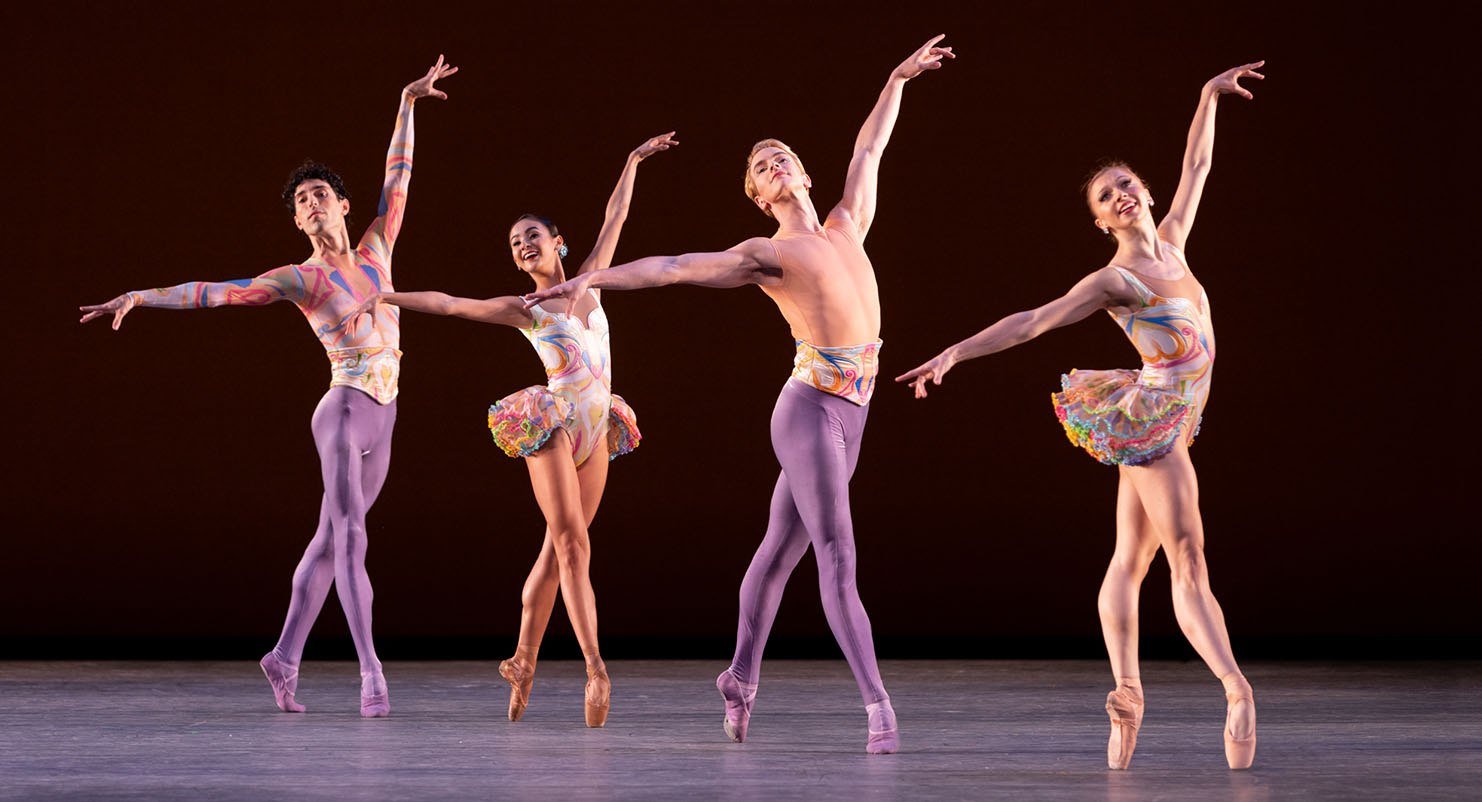
Costumes designed by Cortazar for Durante Verzola’s ‘Sentimiento’ at Miami City Ballet, 2023.
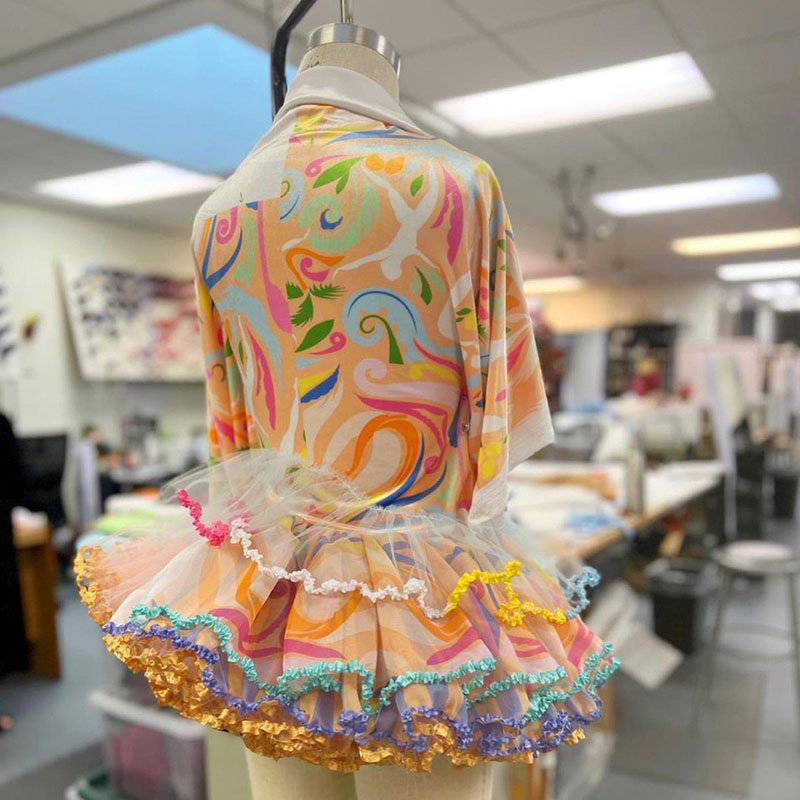
LATINNESS: Where has this path taken you in terms of creative projects?
ESTEBAN: I’m doing lots of things. I’m in Miami now doing the Miami City Ballet costumes. I did the New York City Ballet costumes in 2020, and that was a magical experience. Then I was invited to do them here, and I was so excited because I grew up watching the Miami City Ballet. It’s part of my roots.
They had their studio on Lincoln Road. It’s been an amazing experience to work with dancers, in a different type of industry with its own things, its own rules to break or rules to follow, and that’s been very exciting.
I also am launching another completely different collaboration with PSG (Paris Saint-Germain), so that’s really cool. It’s been in the works for around four years. It’s a capsule collection inspired by how much soccer is a huge part of Latin America and the way it unites people, for the love of the sport. They wanted a designer that could mix those two worlds.
The bigger project I can’t really talk about yet, but it’s more of a permanent project for the brand. It’s done in a completely different way, embodying my roots, where I come from, and all of these places that have made me who I am; and for my love of summer. I’m always searching for summer and the sun. It’s all within that, but it really celebrates Cartagena, Miami, Ibiza, all the places that really inspire me.
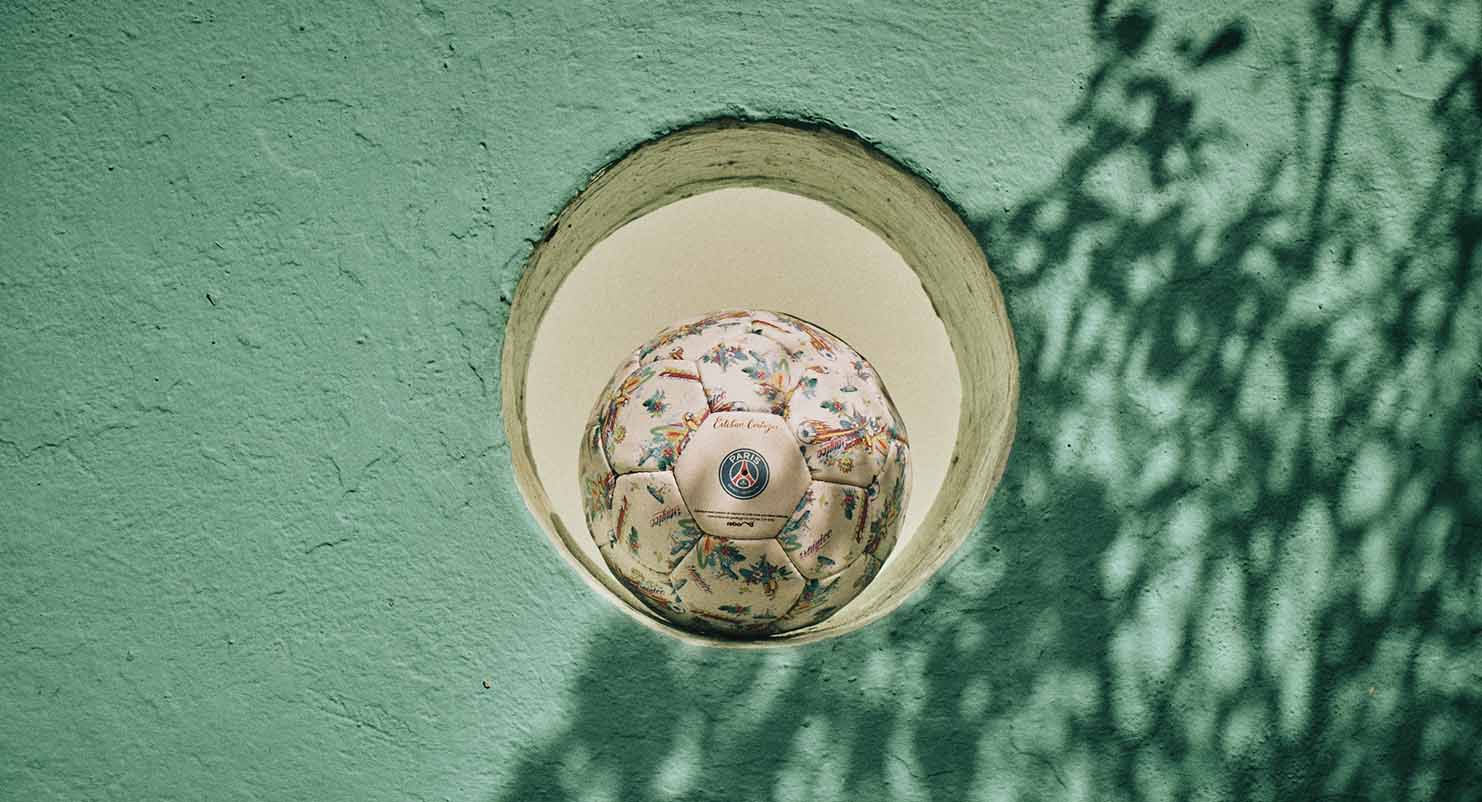
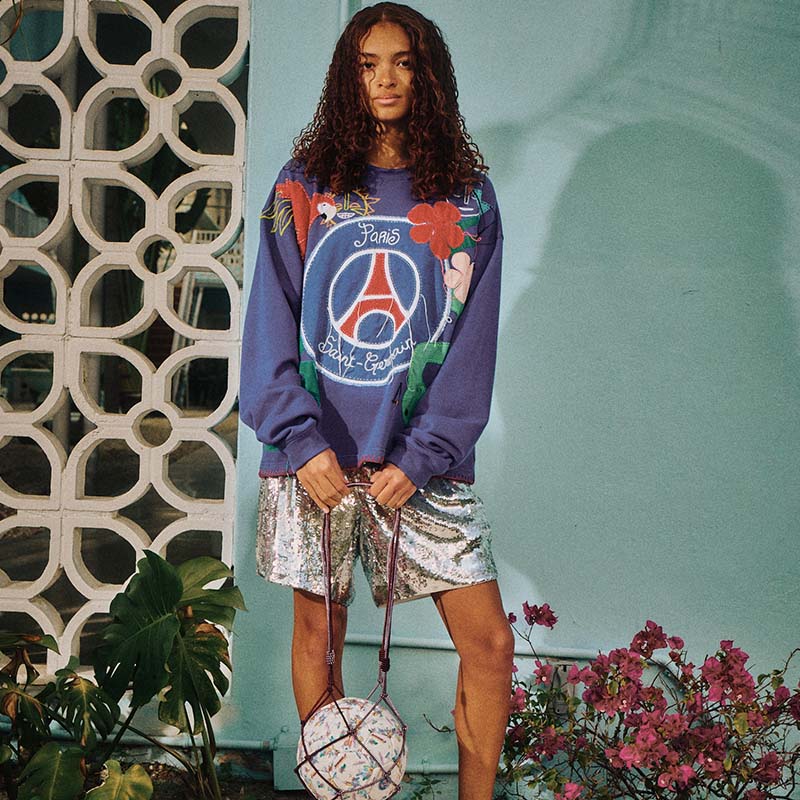
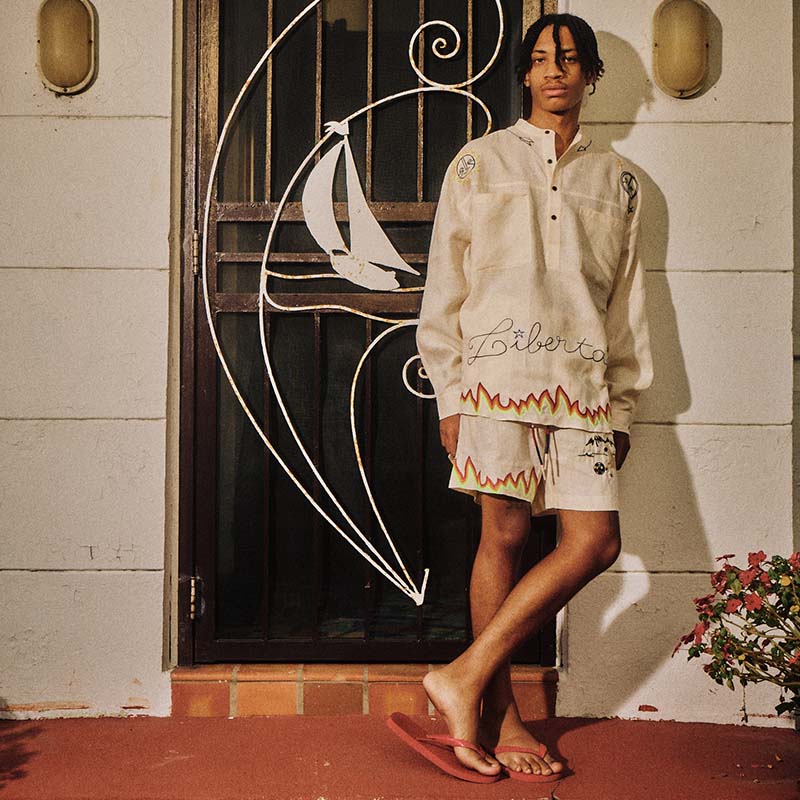
From the Esteban Cortazar for Paris Saint-Germain collaboration.
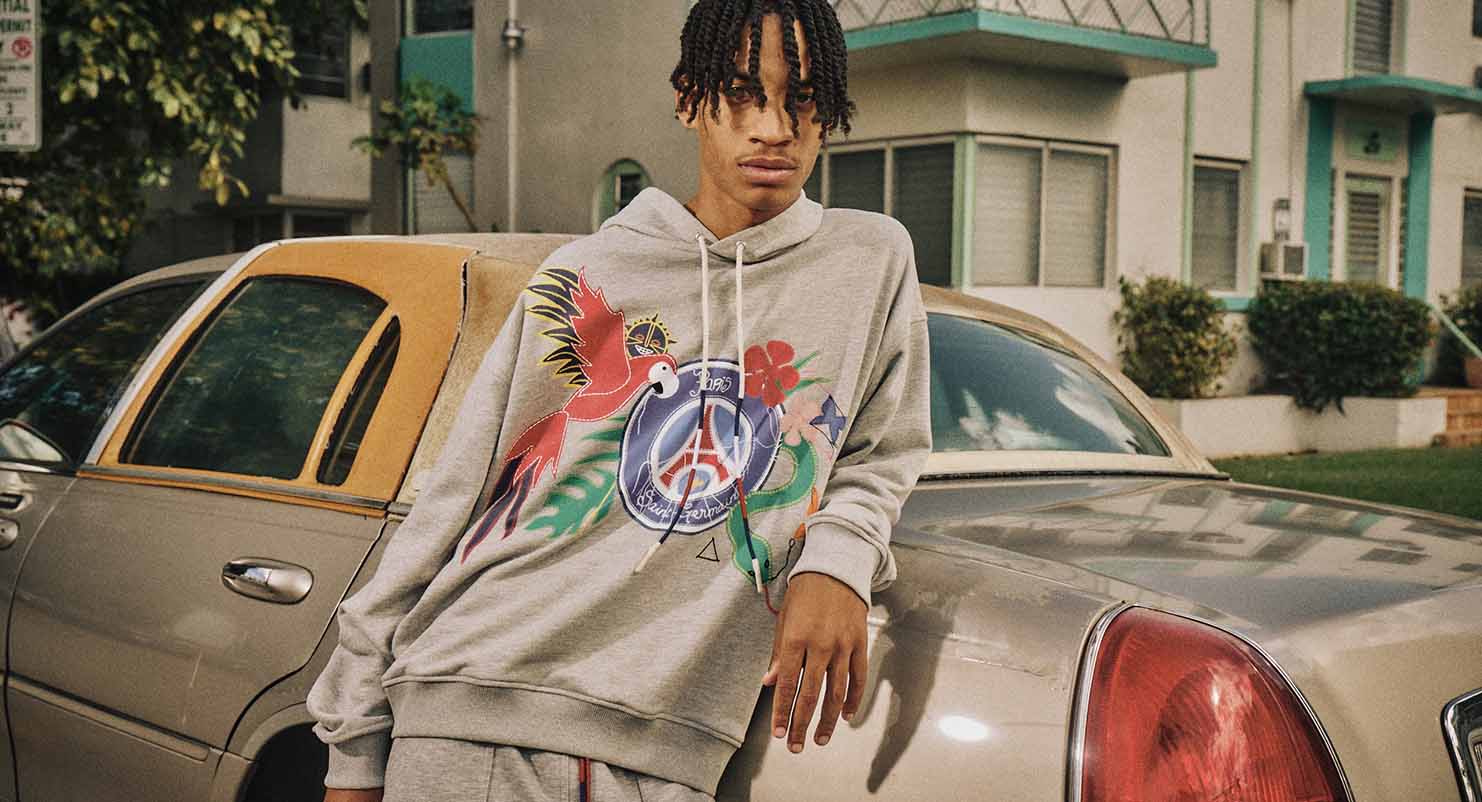
LATINNESS: People really love and admire you in Latin America for all that you’ve accomplished and what it represents for the region. Do you consider yourself a role model for your communities?
ESTEBAN: Thank you for that. I hope so, I mean I want to be, and that’s kind of the goal too. I always say that for me the biggest goal is to inspire others.
If my story can inspire others in any way, even just one person, that’s a huge achievement.
LATINNESS: I’m curious, these days would you call yourself a designer or an artist?
ESTEBAN: I like to think of myself as an artist because I operate that way in my life. My style is very much that way and I’ve come from that. My way of being is more of an artist’s type than a designer. But, I am a designer. I like to think of myself as a creative person. Someone who has lots of different directions. The more I progress in my career, the more I’d like to explore those muscles and think about different ways to include my creativity.
Images courtesy of Esteban Cortazar.

